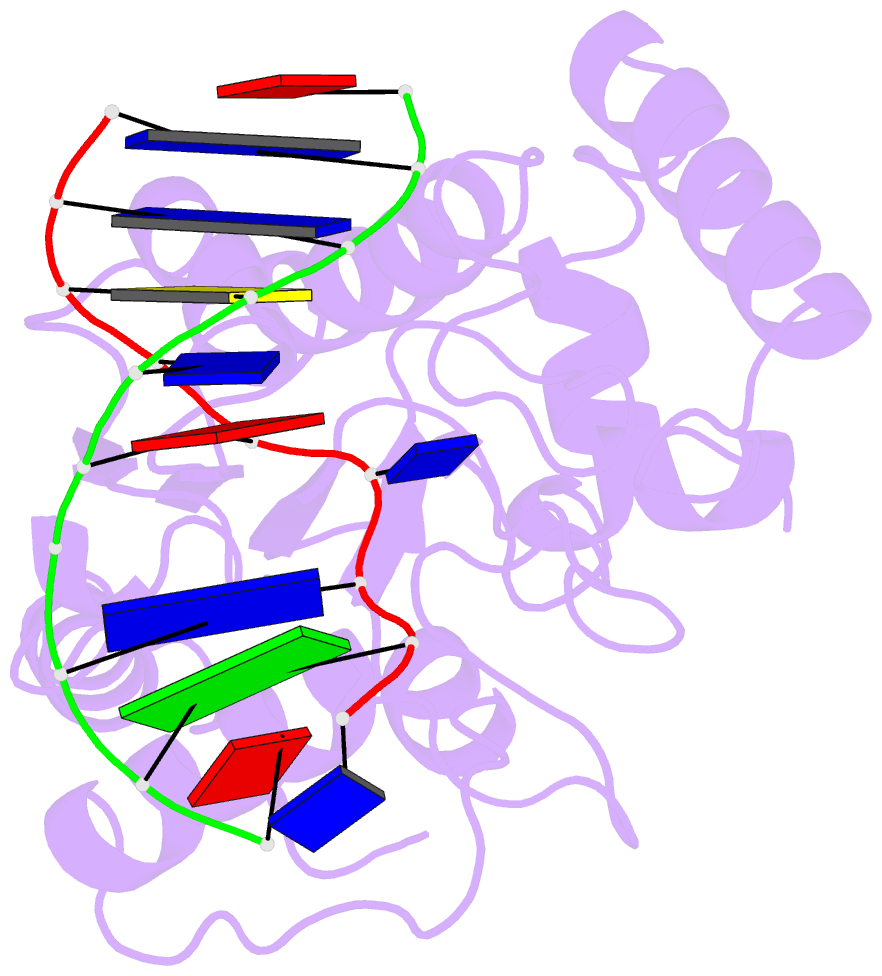Summary information and primary citation
- PDB-id
- 2oxm; SNAP-derived features in text and JSON formats;
DNAproDB
- Class
- hydrolase-DNA
- Method
- X-ray (2.5 Å)
- Summary
- Crystal structure of a ung2-modified DNA complex that represent a stabilized short-lived extrahelical state in ezymatic DNA base flipping
- Reference
- Parker JB, Bianchet MA, Krosky DJ, Friedman JI, Amzel LM, Stivers JT (2007): "Enzymatic capture of an extrahelical thymine in the search for uracil in DNA." Nature, 449, 433-437. doi: 10.1038/nature06131.
- Abstract
- The enzyme uracil DNA glycosylase (UNG) excises unwanted uracil bases in the genome using an extrahelical base recognition mechanism. Efficient removal of uracil is essential for prevention of C-to-T transition mutations arising from cytosine deamination, cytotoxic U*A pairs arising from incorporation of dUTP in DNA, and for increasing immunoglobulin gene diversity during the acquired immune response. A central event in all of these UNG-mediated processes is the singling out of rare U*A or U*G base pairs in a background of approximately 10(9) T*A or C*G base pairs in the human genome. Here we establish for the human and Escherichia coli enzymes that discrimination of thymine and uracil is initiated by thermally induced opening of T*A and U*A base pairs and not by active participation of the enzyme. Thus, base-pair dynamics has a critical role in the genome-wide search for uracil, and may be involved in initial damage recognition by other DNA repair glycosylases.





